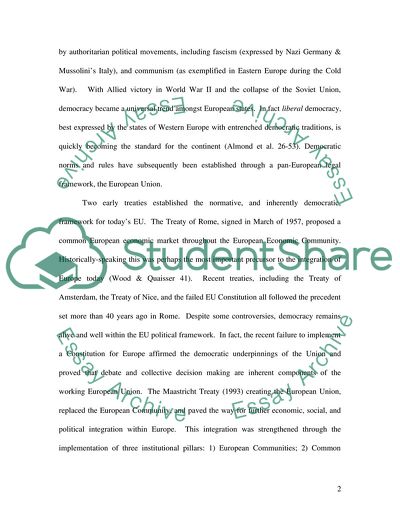Cite this document
(Recent European Union Treaties Assignment Example | Topics and Well Written Essays - 1500 words, n.d.)
Recent European Union Treaties Assignment Example | Topics and Well Written Essays - 1500 words. https://studentshare.org/politics/1546902-discuss-the-strengths-and-weaknesses-of-the-recent-european-union-treaties-such-as-the-treaty-of-amsterdam-the-treaty-fo-nice-and-the-eu-constitution-which-w
Recent European Union Treaties Assignment Example | Topics and Well Written Essays - 1500 words. https://studentshare.org/politics/1546902-discuss-the-strengths-and-weaknesses-of-the-recent-european-union-treaties-such-as-the-treaty-of-amsterdam-the-treaty-fo-nice-and-the-eu-constitution-which-w
(Recent European Union Treaties Assignment Example | Topics and Well Written Essays - 1500 Words)
Recent European Union Treaties Assignment Example | Topics and Well Written Essays - 1500 Words. https://studentshare.org/politics/1546902-discuss-the-strengths-and-weaknesses-of-the-recent-european-union-treaties-such-as-the-treaty-of-amsterdam-the-treaty-fo-nice-and-the-eu-constitution-which-w.
Recent European Union Treaties Assignment Example | Topics and Well Written Essays - 1500 Words. https://studentshare.org/politics/1546902-discuss-the-strengths-and-weaknesses-of-the-recent-european-union-treaties-such-as-the-treaty-of-amsterdam-the-treaty-fo-nice-and-the-eu-constitution-which-w.
“Recent European Union Treaties Assignment Example | Topics and Well Written Essays - 1500 Words”. https://studentshare.org/politics/1546902-discuss-the-strengths-and-weaknesses-of-the-recent-european-union-treaties-such-as-the-treaty-of-amsterdam-the-treaty-fo-nice-and-the-eu-constitution-which-w.


